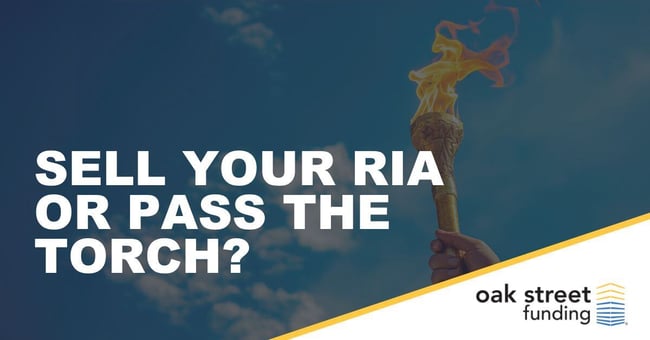
For many RIAs, building a successful firm is their life's work. But when it comes to transitioning ownership, the path forward is not always clear. Two options often rise to the top: external sale, often through a private equity (PE) buyout, or internal succession. In a PE buyout, typically the seller gives up 100% of the control and the buyer may take the firm in a different direction than the seller envisioned. With internal succession, the exiting owner has more control over the direction of the firm and can guide the new owners in the direction they feel is best.
The Allure of the Buyout
Private equity firms are hungry for a slice of the RIA pie. According to MarshBerry, since 2020, private capital backed buyers have increased their portion of total deals by 18% as of July 2024. Often, they offer top dollar for established firms and these offers can be incredibly tempting. Financial security becomes a reality, and owners can exit on a high note. Additionally, PE firms often provide resources for growth, potentially taking the firm to a whole new level.
But is it all sunshine and roses?
Sellers should be aware that major payout may come with high capital gains tax. With internal succession, there is more control for how to structure payouts, potentially limited tax implications. Additionally, loss of control is a major concern. The new PE owners may have different priorities and philosophies, potentially impacting the firm's culture and client service. Private equity owners may cut staff or reduce other costs to inflate profitability for resale. Client churn can also be a risk, especially if clients feel a disconnect with the new ownership.
Preserving the Legacy
Internal succession offers a path to continue the firm's legacy. By promoting from within, owners can ensure their values and investment philosophy are carried forward. Client relationships are more likely to remain strong, fostering trust and stability. This option can also be rewarding for long-term employees who have a vested interest in the firm's success.
The Internal Succession Challenge
However, internal succession is not without its drawbacks. According to Rob Madore, VP at MarshBerry, the delta between internal succession and external sale value can be between 30% to 60%. Additionally, identifying and grooming the right successor takes time and effort. Even once the successor is identified, they likely cannot afford to buy into the firm. According to DeVoe’s 2024 Q1 Deal Book, only 18% of RIA executives are confident that their successors have the capacity to buy them out. So, how can RIA owners help the next generation afford the buy in and preserve their firm’s legacy.

The exiting owners of Cornerstone Financial Planning choose to leave their firm to their internal successors, Mackenzie Parsons and Christina Traurig. However, Parsons and Traurig faced common concern among Generation 2 business owners: the increasing difficulty in affording such transactions. To find out how they successfully bought out the firm without jeopardizing their personal assets, check out this case study!
The Phased Succession Approach
Many of our clients find a phased approach to succession is the best way to help the next generation afford the purchase and ensure a smooth transition. With this approach, the current owner and prospective owner agree to a transition period typically between 3-5 years. The exiting owner transitions shares and responsibility of the firm to the new leadership over time. Rather than an abrupt transition, this approach allows the exiting owner to gradually give the new owners responsibility and eases transition anxiety for employees and clients.
-1.png?width=486&height=275&name=Phased%20Succession%20Graphic%20(2)-1.png)
Financing the Succession
To finance the succession, traditional banks often require the borrower to have a substantial cash balance in their personal bank account or want to put a lien against personal residences. Another option is a specialty lender like Oak Street Funding which will use the value of the firm as the collateral for financing. Then the new owner is able to take out a loan without pledging their personal property. Specialty lenders can also structure the deal to allow for a phased succession. This allows the new owners to purchase the firm in stages with payments they can manage rather than the large lump sum required in a one-time buyout.
The Bottom Line: There's No Easy Answer
The decision of PE buyout versus internal succession hinges on individual priorities. Financial security may outweigh legacy concerns for some owners, while others prioritize the preservation of their life's work.
Here are four questions to consider:
-
- What is your financial situation?
- How important is it to you to maintain control of the firm?
- What are your long-term goals for the RIA?
- Who are your potential internal successors, and what are their capabilities?
By carefully considering these questions and seeking professional guidance, RIA owners can make an informed decision that ensures a smooth transition and a bright future for their firm, whether it is under their own legacy or a new set of guiding hands.




-1.png?width=486&height=275&name=Phased%20Succession%20Graphic%20(2)-1.png)


/Resources%20Thumbnails%20(75).png?width=600&height=314&name=Resources%20Thumbnails%20(75).png)